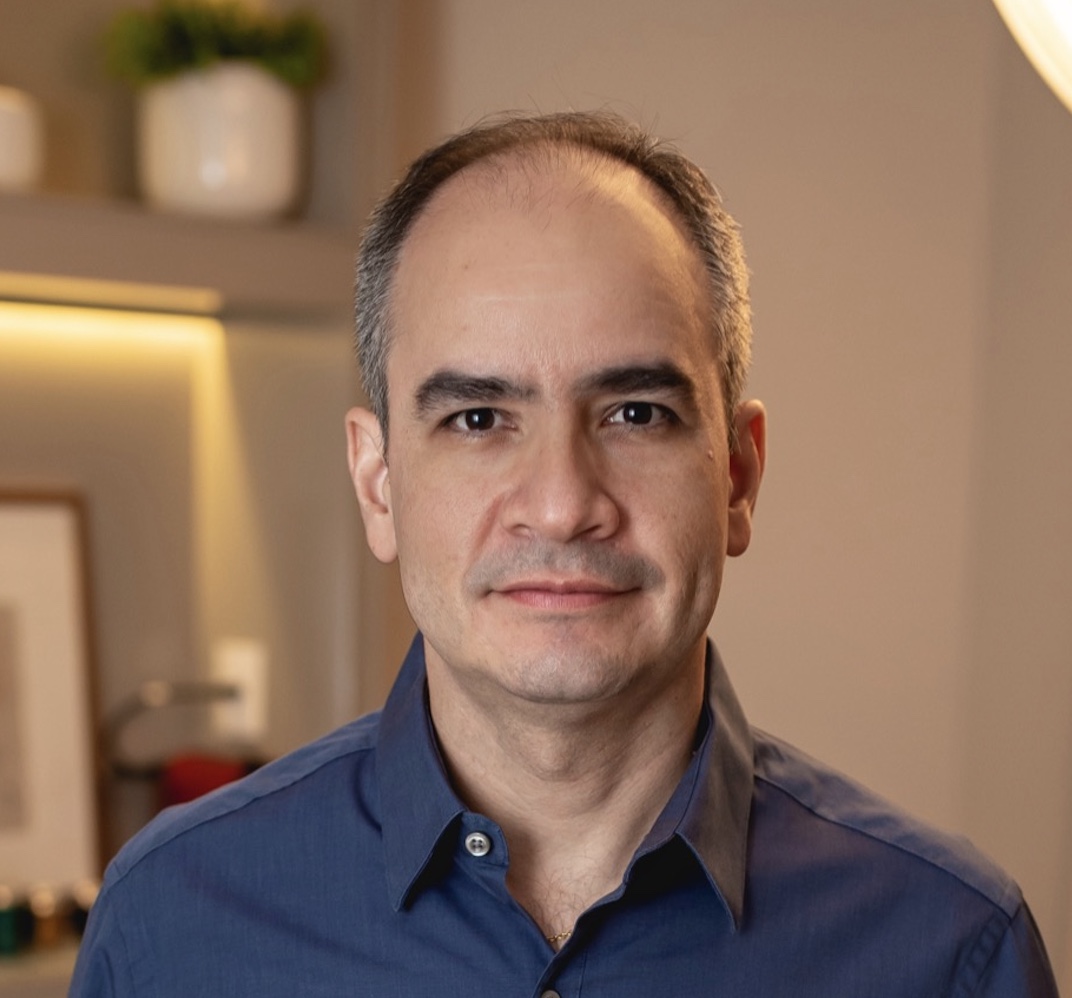2023 Paolo Aglietti Award Winner

João Alberto Ramos Maradei Pereira MD, PhD, Prof, BRAZIL
Presentation Title: Edema and Blood Loss after Total Knee Arthroplasty with Mechanical (Portable Intermittent Pneumatic Compression Device) or Pharmacological Thromboprophylaxis: Randomized Clinical Trial
The Paolo Aglietti Award was such an honor for our research team. Our randomized clinical trial was carried out at Hospital Maradei, a philanthropic hospital in Belém, Pará, at the heart of the Brazilian Amazon. Our research team belongs to two universities from different regions of Brazil: Universidade Federal do Pará (UFPA) and Universidade de São Paulo (USP).
The study addressed an issue that concerns every knee surgeon: thromboprophylaxis in total knee arthroplasty (TKA). We chose eligible participants, according to the American Academy of Orthopaedic Surgeons (AAOS) and American College of Chest Physicians (ACCP) guidelines, to receive either mechanical only or pharmacological only prophylaxis. We compared edema and blood loss between the groups. We received no financial support from any kind (industry or public).
 Fig 1. Photograph of the unilateral portable intermittent pneumatic
compression device (IPCD) used in the trial (with patient consent).
Fig 1. Photograph of the unilateral portable intermittent pneumatic
compression device (IPCD) used in the trial (with patient consent).
It was an open, parallel, randomized equivalence trial with two arms. Adult patients undergoing primary total unilateral knee arthroplasty for any reason were randomized to one of two protocols of thromboprophylaxis: Group E, pharmacological (enoxaparin) or Group M, mechanical (unilateral portable intermittent pneumatic compression device, IPCD, figure 1).
All patients (150) were operated by the same surgeon using the same technique. The only difference was the method of thromboprophylaxis. The dose of enoxaparin given to Group E was 40 mg subcutaneously (equal dose for all patients and regardless of weight) 12 hours after the end of surgery. A daily dose was maintained until the 10th postoperative day. Group M received mechanical prophylaxis only, with a portable IPCD for continuous use for 10 days—it was installed at the end of the surgery, right after the dressing, below the knee. The portable device allowed its use even while walking. The IPCD was placed only on the operated leg. The patient was instructed to wear it 24 hours a day, removing it only for showering. After hospital discharge, they were supposed to take it home and bring it back to their first return visit 10 days later.
The primary outcome, edema, was evaluated at the thigh, leg and ankle circumference in centimeters, before surgery and on the third postoperative day. Blood loss, the secondary outcome, was evaluated by the volume accumulated in the suction drain, in milliliters, and the hemoglobin (Hb, g/dl) and hematocrit (Ht, %) in the blood count taken in the morning before and again 48 hours after surgery.
We lost 3 enoxaparin participants and 2 IPCD participants to follow-up with. There was no case of symptomatic venous thromboembolism. Four patients needed transfusions (three receiving enoxaparin)—one had an infection and one had hemarthrosis (both in the enoxaparin group). Leg circumference increased by approximately 2cm for enoxaparin group and 1.5cm in IPCD (p<0.001). The increase in ankle circumference was about 1.5 cm in the enoxaparin group (p<0.001), and almost zero in IPCD (p=0.447). Enoxaparin group lost 566.1ml (standard deviation, SD, 174.5) of blood in the first 48h, versus 420.8ml (SD 142.5) in the IPCD.
Thus, the conclusion of the research was that exclusively mechanical prophylaxis after TKA with portable IPCD on the operated leg reduces leg and ankle swelling and post-operative blood loss compared to exclusively pharmacological prophylaxis with enoxaparin.
This topic is very appealing since total knee arthroplasty is one of the most common procedures in Orthopaedics and is expected to gain in popularity over the next few decades.
The atmosphere at the ISAKOS Congress is unique—it is definitely a world congress. Our presentation was a small sample of this spirit: the moderators were from three different continents—Dr.Myles Coolican (Australia), Dr. Andrew Price (England) and Dr Daniel Wascher (USA).
 Fig.3 Prof João Espregueira-Mendes (Portugal) and Prof João Alberto Maradei Pereira (Brazil)
Fig.3 Prof João Espregueira-Mendes (Portugal) and Prof João Alberto Maradei Pereira (Brazil)
 Fig 2. From left to right: Prof Nicolaas Budhiparama (Indonesia), Prof. João Alberto Maradei Pereira (Brazil) and Dr KuKuh Dwiputra (Indonesia).
Fig 2. From left to right: Prof Nicolaas Budhiparama (Indonesia), Prof. João Alberto Maradei Pereira (Brazil) and Dr KuKuh Dwiputra (Indonesia).
At the ISAKOS Global Connection Reception, we were able to talk to other award and scholarship winners from Asia (Thailand and Indonesia) and to Dr. Nicolass Budhiparama Jr. himself (figure 2), to whom we had the opportunity to thank in person for the prize. We were very proud to receive the award from a completely independent educational organization without commercial bias. At that time, we also strengthened relations with Prof. Espregueira-Mendes from Portugal regarding future multicentric studies between Brazil and Portugal (figure 3). The kind of knowledge and exchange provided by ISAKOS Congresses is priceless.
Also at Boston Congress, a very peculiar coincidence occurred. In 2007, our research team won 3rd place for the John Joyce Award in Florence. At that time, Prof. Paolo Aglietti was ISAKOS president. This year, we were able to win the Aglietti award which recognizes his remarkable work. It is a privilege to be linked twice to Prof. Paolo Aglietti, whose legacy in knee surgery will never be forgotten.
Again, we would like to thank ISAKOS and the Nicolaas Institute of Constructive Orthopedic Research & Education Foundation for Arthroplasty & Sports Medicine for sponsoring the Award (figure 4). We are proof the goal to foster research and genuine scientific curiosity was fully accomplished. Looking forward to Munich 2025!
 Fig.4 – Celebrating the Award.
Fig.4 – Celebrating the Award.